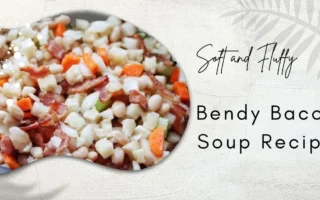Belizean Creole Bread is more than just a staple in Belizean cuisine; it is a symbol of cultural heritage, family traditions, and community bonding. This bread, with its rich aroma of coconut milk, soft texture, and golden crust, is a beloved treat in many Belizean households. Whether eaten plain, toasted with butter, or used as a base for dishes like French toast and bread pudding, Belizean Creole Bread has a special place at the table.
In this article, we’ll walk you through a detailed and authentic recipe for making Belizean Creole Bread from scratch. We’ll cover the steps, tips, and variations to ensure your bread turns out perfectly every time. Along the way, we’ll also explore the cultural significance of this bread, answer common questions, and provide a comprehensive guide to mastering this delicious treat.
What is Belizean Creole Bread?

Belizean Creole Bread is a soft, slightly sweet bread traditionally made with coconut milk. Its origins can be traced back to the Creole community in Belize, where it is a popular staple, often enjoyed with butter, jam, or cheese. The bread is characterized by its rich, fragrant aroma, a result of the coconut milk used in the dough, and its soft, airy crumb that makes it perfect for both sweet and savory pairings, belizean creole bread recipe.
Ingredients You Will Need
To make authentic belizean creole bread recipe, you’ll need the following ingredients:
| Ingredient | Quantity | Notes |
| Coconut Milk | 1 ½ cups | Preferably organic; homemade coconut milk is recommended for the best flavor. |
| White Flour | 5-8 cups | The amount needed depends on the humidity in your region. Start with 5 cups. |
| Instant Yeast | 2 teaspoons | Ensure it is fresh and active for the best rise. |
| Vegetable Oil | ½ cup | Canola or coconut oil works well. Coconut oil enhances the coconut flavor. |
| Sugar | 2 tablespoons + 2 teaspoons | The sugar helps to activate the yeast and adds a slight sweetness to the bread. |
| Warm Water | ½ cup | Used to proof the yeast. |
| Salt | 1 teaspoon | Enhances the overall flavor of the bread. |
Optional Ingredient:
- Homemade Coconut Milk: If you want to make your coconut milk from scratch, you’ll need a mature coconut. Instructions for making coconut milk are included below.
Step-by-Step Instructions for Making Belizean Creole Bread
1. Prepare the Coconut Milk (Optional)
- If you prefer to make your coconut milk from scratch:
- Pierce the eye of a mature coconut using an ice pick and drain the coconut water into a pot.
- Break open the coconut with a hammer or heavy knife.
- Grate the coconut meat finely, using a food processor if available.
- Heat the coconut water on medium heat and add the grated coconut meat. Stir and mash the mixture, allowing it to stand for about 15 minutes until the liquid turns milky and opaque.
- Strain the mixture through a cloth to obtain fresh coconut milk.
2. Proof the Yeast
- In a small bowl, combine:
- ½ cup warm water
- 2 teaspoons yeast
- 2 teaspoons sugar
- 2 tablespoons flour
- Stir the mixture and let it sit for about 10 minutes, or until it becomes foamy and bubbly. This step ensures that the yeast is active and ready to help your bread rise.
3. Warm the Milk Mixture
- In a microwave-safe bowl, combine:
- 1 ½ cups coconut milk
- ½ cup vegetable or coconut oil
- 2 tablespoons sugar
- 1 teaspoon salt
- Warm the mixture in the microwave for about 20 seconds. Be careful not to overheat it; the mixture should be warm to the touch but not hot. Set it aside to cool slightly.
4. Mix the Dough
- In a large mixing bowl, sift 5 cups of flour.
- Once the milk mixture has cooled to a comfortable temperature, add it to the yeast mixture.
- Gradually add the combined liquid ingredients to the flour, mixing with a wooden spoon until a dough forms.
- If the dough is too sticky, gradually add more flour, ½ cup at a time, until the dough is soft but manageable.
5. Knead the Dough
- Transfer the dough to a floured surface and knead for 5-8 minutes until it becomes smooth and elastic.
- If the dough sticks to your hands or the surface, sprinkle with additional flour as needed.
6. First Rise
- Place the kneaded dough in a greased bowlCover the dough with a damp cloth and allow it to rise in a warm, draft-free spot for about 1 hour, or until it has doubled in size.
7. Shape the Dough
- After the dough has risen, gently punch it down to release any trapped air.
- Knead the dough briefly, then divide it into two large or six small round balls, depending on the size of the loaves you want.
- Place the shaped dough onto a greased baking sheet.
8. Second Rise
- Let the shaped dough rise again for about 30 minutes. This second rise will give the bread a lighter texture.
9. Bake the Bread
- Preheat your oven to 400°F (205°C).
- Bake the bread for 30-35 minutes, or until the tops are golden brown and the loaves sound hollow when tapped on the bottom.
- For an extra golden crust, you can brush the tops with a little melted butter or coconut oil before baking.
Comparison: Homemade vs. Store-Bought Coconut Milk
| Aspect | Homemade Coconut Milk | Store-Bought Coconut Milk |
| Flavor | Richer, fresher, more authentic coconut flavor. | Convenient, but often less flavorful. |
| Texture | Creamier, with a natural layer of coconut cream. | Uniform, thinner texture. |
| Nutritional Content | Can be adjusted; no preservatives. | May contain additives and preservatives. |
| Preparation Time | Requires time and effort to prepare. | Ready to use straight from the can. |
| Cost | Usually cheaper, especially if coconuts are readily available. | Slightly more expensive but more convenient. |
Tips for the Perfect Belizean Creole Bread
- Humidity Consideration: The amount of flour needed can vary based on the humidity in your kitchen. In drier conditions, you might need less flour, while in more humid conditions, more flour may be necessary.
- Kneading: Kneading is crucial for developing the gluten that gives the bread its structure. Don’t rush this step; take your time to ensure a smooth, elastic dough.
- Baking: Keep a close eye on the bread while it bakes. If the tops are browning too quickly, you can tent them with aluminum foil to prevent burning.
Conclusion
Belizean Creole Bread is more than just a delicious treat; it’s a connection to the rich cultural heritage of Belize. Whether you’re enjoying it fresh out of the oven, toasted with a spread, or as a base for other dishes, this bread brings a little piece of Belizean tradition into your home.




